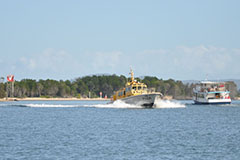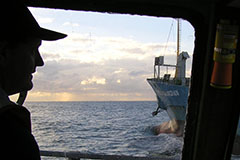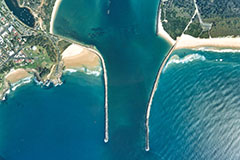Vessel parameters
The following dimensions provide guidance on vessel parameters that apply to navigation and mooring in the port:
- LOA – 120m
- Beam – 20m for port transits occurring within a UKC time slot. Shallow draft vessels e.g. barges – assessed on a case by case basis
- Draft – dependent on meeting UKC requirements. Mean sea level and updated channel depths can be used to calculate average maximum draft. MHWNs can be used to assess port access slots
- Displacement – as determined by LOA, beam and draft parameters. Vessels displacing > 5000 Tonnes will be assessed on a case by case basis.
Underkeel Clearance
The Underkeel Clearance (UKC) requirements of the Harbour Master's Directions are to be complied with at all times. The minimum static UKC for navigation within the port is 10% of the vessel’s deepest draft.
These are:
- Underway – minimum of 10% UKC during all stages of the passage
- Alongside – minimum of 5% UKC
- Port approach – 10% plus an additional 1.5m.
The additional UKC in the Port Approach – Precautionary area may be increased at the discretion of the port or assigned Pilot and is dependent on hull form, prevailing sea and swell and predicted state of tide. Vessels alongside and loading/discharge or handling stores with ship's gear are to account for heel when determining ‘Alongside – UKC’.
Drafts
The propeller blades are to be fully immersed at a static draft. In this case, fully immersed means an aft draft not less than 120% of the diameter of the propeller.
Maximum trim for vessels navigating the port is not to exceed the following values based on LOA:
- 60m - 80m – 2% of LOA
- 80m - 100m – 1.5% of LOA or
- 100m - 120m – 1.2% of LOA
The minimum forward draft is not to be less than the following values based on LOA:
- 60m - 80m – 2% of LOA
- 80m - 100m – 2.5% of LOA or
- 100m - 120m – 3% of LOA
Depths
Shipping channel depths are maintained at 4m at chart datum. Enquiries regarding the latest depth information should be directed to the port in the first instance.







